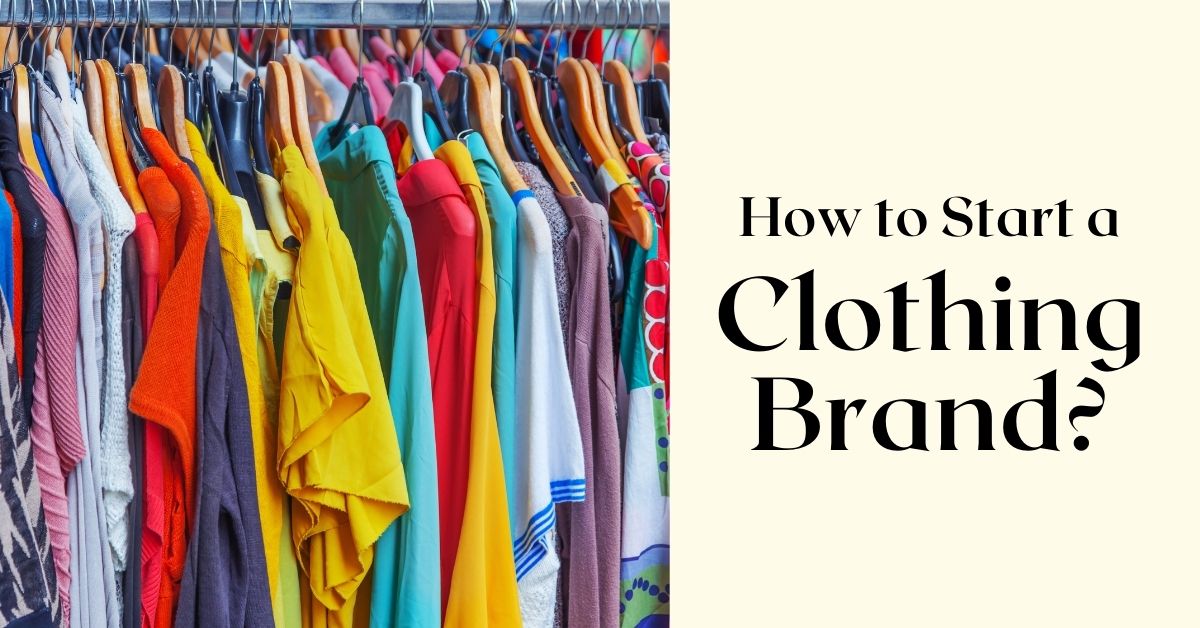
How to Start a Clothing Brand: 9-Step Guide
- By surekacollection
- Posted on
Do you have a love for fashion and are looking forward to the day when you will have your line of clothing? Starting a clothing brand can be an exciting and rewarding venture, but it requires careful planning and execution.
From defining your brand identity to launching your products, each step is crucial in building a successful business. This guide will walk you through nine essential steps to help you turn your vision into reality, ensuring that your clothing brand stands out in the competitive fashion industry.
What is a Clothing Brand?
A clothing brand can be identified as a collection of diverse products that are effectively introduced into the market under the banner of a single brand name. A clothing brand meets the styling objective of a specific demographic that is conventionally promoted through online or offline platforms.
Steps to Starting a Clothing Business
1. Research Fashion Trends or Needs
When entering the sphere of fashion, it is crucial to research thoroughly. Read up on current fashion magazines, go to fashion shows, and keep up with fashion designers and trends on social media.
Knowledge of the current trends in the fashion market, the needs of your target audience, and the existing gaps in the market will dictate the choice of styles and materials for your brand. This way, you will be in a position to manage your brand in the competitive fashion market by observing trends and consumers.
2. Choose a Niche
Choosing the right niche is central to establishing a brand and determining the relevant market. You can choose any niche that resonates with your passion and market demand, such as streetwear, sustainable fashion, luxury fashion, plus-size fashion, or ethnic wear for women and men.
Ethnic wear, in particular, offers a unique opportunity to tap into a market that values cultural heritage, traditional craftsmanship, and vibrant, intricate designs. Clearly defining a market not only secures a steady stream of customers but also makes the process of advertising more streamlined as it is focused on a particular group of people.
This approach is more strategic, helping to strengthen the actual brand and build better relationships with the target audience.
3. Develop a Business Plan

The development of an effective business plan is a good practice and helps lay out a successful business strategy when starting a clothing brand. Explain your brand’s purpose, objectives, and principles, as well as the demographic group you are going to address and the competitive advantages that you offer.
These should be in the form of comprehensive financial forecasts, initial expenses, anticipated funding, and an elaborate plan for the marketing campaign. Not only does such a plan help in the decision-making process when it comes to operations, but it also convinces investors and lenders to invest in your business by presenting a clear vision.
Therefore, it serves as a reference document that guides various aspects of your business toward achieving long-term goals and sustaining success in the highly competitive fashion industry.
4. Create Your Brand Name
Your brand name is your identity, voice, and image in the marketplace. It is the first impression your business will make on potential customers. Select the name that will accord with the brand personality, appeal to the target market, and be unique. The name must be easy to pronounce, not complicated to spell, and available as a domain name.
Make sure to conduct a trademark search to ensure that you do not run into challenges in the future. A good choice of a brand name lays the foundation for your business and greatly influences the formation of the brand image and consumer interest in the goods.
5. Register Your Clothing Business
Legalization is important for the law requirement and organizational structure of the firm. Establish your clothing brand as a business entity, such as an LLC, LLP, or sole proprietorship whichever suits you. Acquire necessary licenses and permits such as business licenses, tax identification numbers, and sales tax permits, as well as other licenses relative to the type of business to be established.
6. Source the Clothes
Vendor management is essential if the quality of the products is to be maintained and if customer satisfaction is to be achieved. Select materials and production companies that you believe in as a brand. This is particularly important in the ethnic wear market, where the authenticity and quality of fabrics, craftsmanship, and designs are paramount.
Utilizing your supplier networks can enable you to negotiate better prices, ensure timely deliveries, and accommodate increased volumes as your business grows. Sourcing strategies play an essential role in building brand image allowing the concerned brand to attract more eyeballs and traction in the market.
This is especially true for those dealing in unstitched suits wholesale, where the choice of suppliers directly impacts the quality and appeal of the final product.
7. Build Pricing and Inventory Strategies
Pricing is another crucial factor that needs to be addressed to achieve revenue and market success. It is important to consider the cost of production, competitors’ prices, and the perceived value of the product to consumers when setting its price. Formulate a plan on how to manage stocks to avoid the costs of holding too many stocks or running out of stock.
Maintain the inventory levels and use inventory management systems to monitor sales and forecast the need for replenishment. The pricing and inventory management plan contribute to the efficient operation of the business, increasing profits and enabling the company to respond more effectively to market forces and client demands.
8. Open a Retail Store, Launch a Pop-up, or Sell Online

When selecting the appropriate sales channel, it is essential to consider your target clientele and the way they prefer to shop, as well as the relative positioning of your brand. A retail store is an establishment where customers can physically access the products and get a feel for the brand, and this is good for brand recognition and customer retention.
On the other hand, pop-up stores are effective since they help you explore new locations and create word-of-mouth campaigns by offering customers limited-time experiences with your brand.
Selling online through e-commerce platforms also extends your market to the global market because it makes products easily accessible to buyers across the world. Assess each of the strategies by the brand’s goals, target market, and financial capability to identify the best strategy for creating sales consistency.
9. Market Your Clothing Business
Marketing plays a crucial role in developing brand recognition and demand within the fashion industry. Instagram, Facebook, and Pinterest are ideal for sharing designs and connecting with the audience, as well as promoting designs via advertising when starting a clothing brand.
Use fashion and beauty influencers to reach out to their audience and increase brand awareness, as well as credibility, among the followers.
Use email marketing techniques to maintain customer relationships, announce new arrivals to collections, and provide special offers to encourage customers to buy from the outlet again.
Integrated and synchronized promotional messages help your brand be easily recognizable in a competitive market and make deep and lasting penetration in the market over time.
Conclusion
The process of launching a clothing line is not simple, but it requires a lot of planning, ideas, and hard work. Following these steps will enable you to convert your vision into a successful business. As you can see, the road might not be easy; however, by having a passion for what you do and being hardworking, you will be able to make a name in the fashion industry.
If you are starting a clothing business specializing in women’s ethnic wear, then Sureka Collection is your go-to destination for sourcing exquisite ethnic attire such as lehengas, suits, gowns, shararas, gararas, and more. We provide ethnic wear for women wholesale and are recognized as one of the best ladies’ ethnic wear wholesale suppliers in the market.

